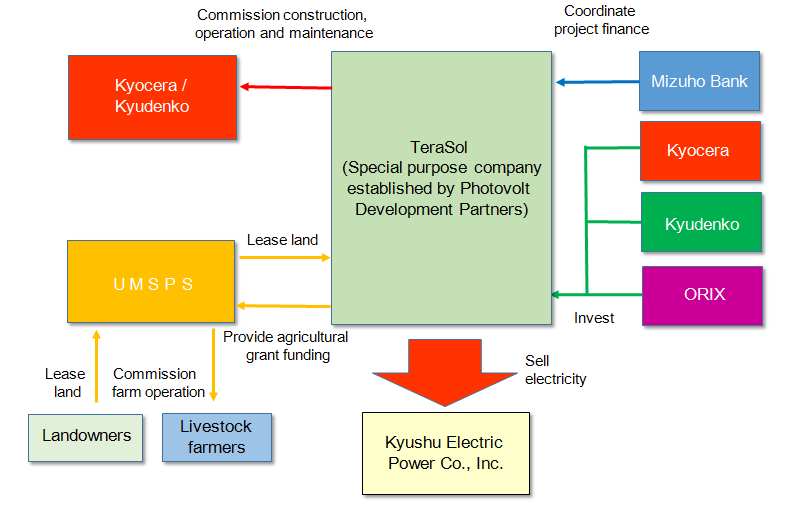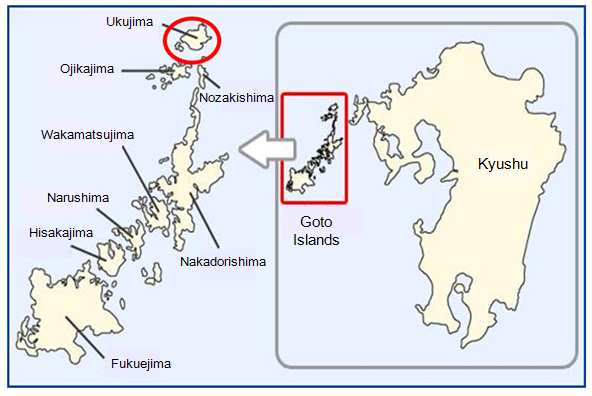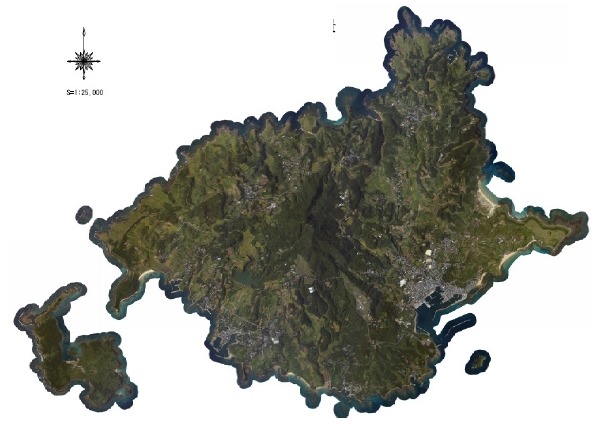News Release
ORIX and Four Other Companies Reach Basic Agreement on Development Plan
for 430-Megawatt Solar Power Project
-Companies agree to explore plan to construct and operate the world’s largest solar power project located on agricultural land on island near Nagasaki, Japan-
Jun 12, 2014
TOKYO, Japan - June 12, 2014 - Photovolt Development Partners GmbH (hereinafter, "PVDP"), Kyocera Corporation (hereinafter, "Kyocera"), Kyudenko Corporation (hereinafter, "Kyudenko"), ORIX Corporation (hereinafter, "ORIX"), and Mizuho Bank, Ltd. (hereinafter "Mizuho Bank") today announced that they have reached a basic agreement to investigate the possibility of operating a 430-megawatt (MW) solar power project on the island of Ukujima (Sasebo City, Nagasaki Prefecture, Japan). The project would be the largest in the world to be implemented on agricultural land*1.
PVDP began planning the solar power project in April 2013 with the aim of helping to contribute to environmental protection and economic revitalization on the remote island. Approximately 150 billion yen in investment is planned for the project, with a goal of starting construction in FY2016 (April 2015 to March 2016). The project envisions using a combined land area of roughly 6.3 million square meters - the equivalent area of 134 professional baseball stadiums - at multiple locations, covering roughly 25 percent of the small island of Ukujima, part of the Goto Islands off the coast of Nagasaki, Japan. The project plans to utilize approximately 1,720,000 of Kyocera's high-output multi-crystalline silicon solar modules to create a 430MW system that would generate an estimated 500,000MWh per year, the equivalent power annually used by roughly 138,800 typical households*2, offsetting roughly 252,200 tons*3 of CO2 each year. By constructing a 60-kilometer undersea cable between Ukujima and the island of Kyushu, all power produced from the project will be sold to the local utility company, Kyushu Electric Power Co., Inc., based on the national feed-in tariff program for renewable energy.
Under the plan, negotiations over land use would be carried out by Ukujima Mega Solar Park Service Corporation (hereinafter, "UMSPS"), which would lease agricultural land or deserted arable land on the island from respective owners. A special purpose company (TeraSol G.K.) would then sublease the land from UMSPS to construct and operate the solar power systems. In this project, the solar modules would be constructed on stilts, allowing the land to be concurrently utilized for both power generation and agriculture. In addition, based on agricultural grant funding from TeraSol, UMSPS will support livestock farmers by commissioning the production of oat grass and other pasture grasses, thus contributing to regional development on the island through both the island's main industry of agriculture and the power generation business.
Agreeing with the benefits of this project, Kyocera, Kyudenko, ORIX and Mizuho Bank aim to achieve an environmentally friendly business model using solar power, while contributing to the development of the island's agricultural base. Along with PVDP, the five companies have reached a basic agreement to explore the project. Under the current plan, the Kyocera Group will supply 100 percent of the modules to be installed, and in cooperation with Kyudenko, will be responsible for the construction, maintenance and management of the solar power systems; while Mizuho Bank will be in charge of planning and coordinating the projects' financing. Additionally, Kyocera, Kyudenko and ORIX are considering making capital investments into TeraSol.
The companies involved will work with the Nagasaki prefectural government, the city of Sasebo and authorities in the community to investigate the most appropriate business model and ensure that environment protection is considered in the selection of sites and construction of the solar power systems.
*1 Largest in the world for a solar power project built on agricultural land (as of June 12, 2014).
*2 Based on an average annual use of 3,600kWh per household. Source: Federation of Electric Power Companies of Japan
*3 Based on calculations derived from standards created by JPEA.
| Project name | Ukujima Mega Solar Park (tentative name) |
|---|---|
| Companies involved | Photovolt Development Partnership GmbH; Ukujima Mega Solar Park Service Corporation; Kyocera Corporation; Kyudenko Corporation; ORIX Corporation; Mizuho Bank, Ltd. (planned) |
| Power output | 430MW |
| Construction site (planned) | Ukujima, Sasebo City, Nagasaki Prefecture, Japan (island area: approx. 24,930,000m2; population: approx. 2,000) |
| Project land use | Approx. 6,300,000m2 (roughly the same area as 134 baseball stadiums) |
| Investment | Approx. 150 billion yen (planned) |
| Start of construction | FY2016 |
* Calculation based on consumption of 3,600 kWh a year per household
Source: Electricity Statistics Information, The Federation of Electric Power Companies of Japan
Scheme of Planned Project


Map of the Goto Islands

Satellite view of Ukujima
About ORIX
ORIX Corporation (TSE: 8591; NYSE: IX) is a financial services group which provides innovative products and services to its customers by constantly pursuing new businesses. Established in 1964, from its start in the leasing business, ORIX has advanced into neighboring fields and at present has expanded into lending, investment, life insurance, banking, asset management, automobile related, real estate and environment and energy related businesses. Since entering Hong Kong in 1971, ORIX has spread its businesses globally by establishing locations in 35 countries and regions across the world. ORIX celebrates its 50th anniversary in 2014 and moving forward it aims to contribute to society while continuing to capture new business opportunities and sustain growth by promoting acceleration of its corporate strategy “Finance + Services.” For more details, please visit our website:http://www.orix.co.jp/grp/en/
| These documents may contain forward-looking statements about expected future events and financial results that involve risks and uncertainties. Such statements are based on our current expectations and are subject to uncertainties and risks that could cause actual results to differ materially from those described in the forward-looking statements. Factors that could cause such a difference include, but are not limited to, those described under “Risk Factors” in the Company’s annual report on Form 20-F filed with the United States Securities and Exchange Commission and under “4. Risk Factors” of the “Summary of Consolidated Financial Results” of the “Consolidated Financial Results April 1, 2012 ? March 31, 2013.” |
- View PDF of this release
- PDF
 [403KB]
[403KB]
- PDF